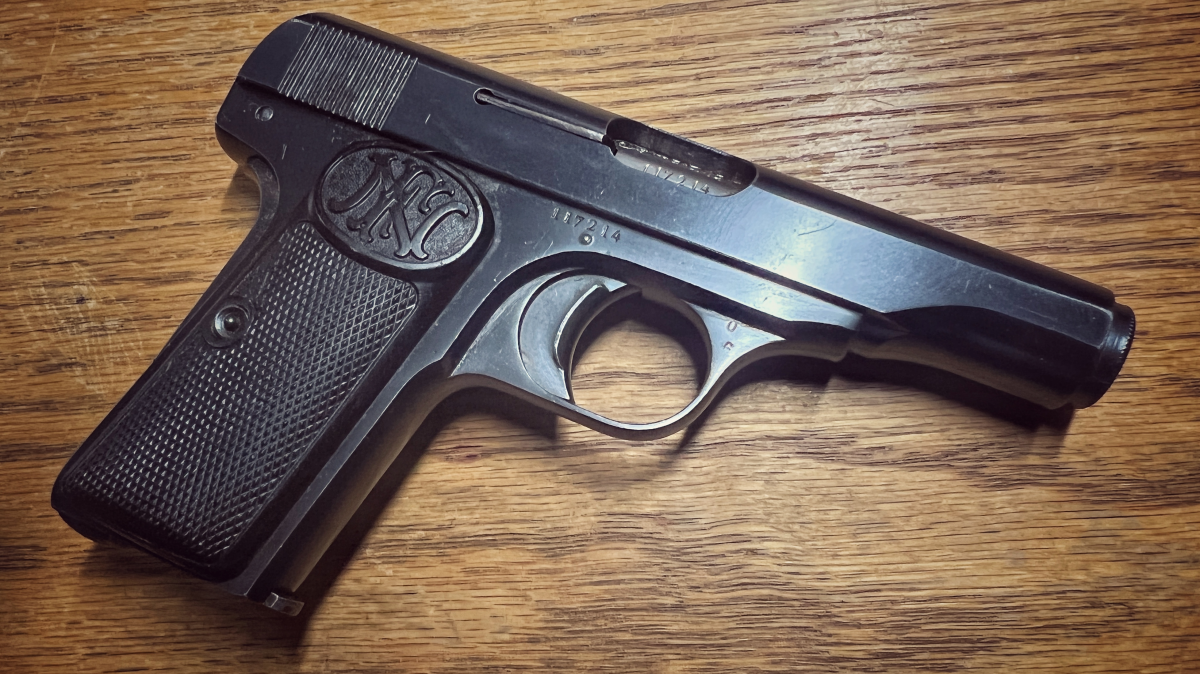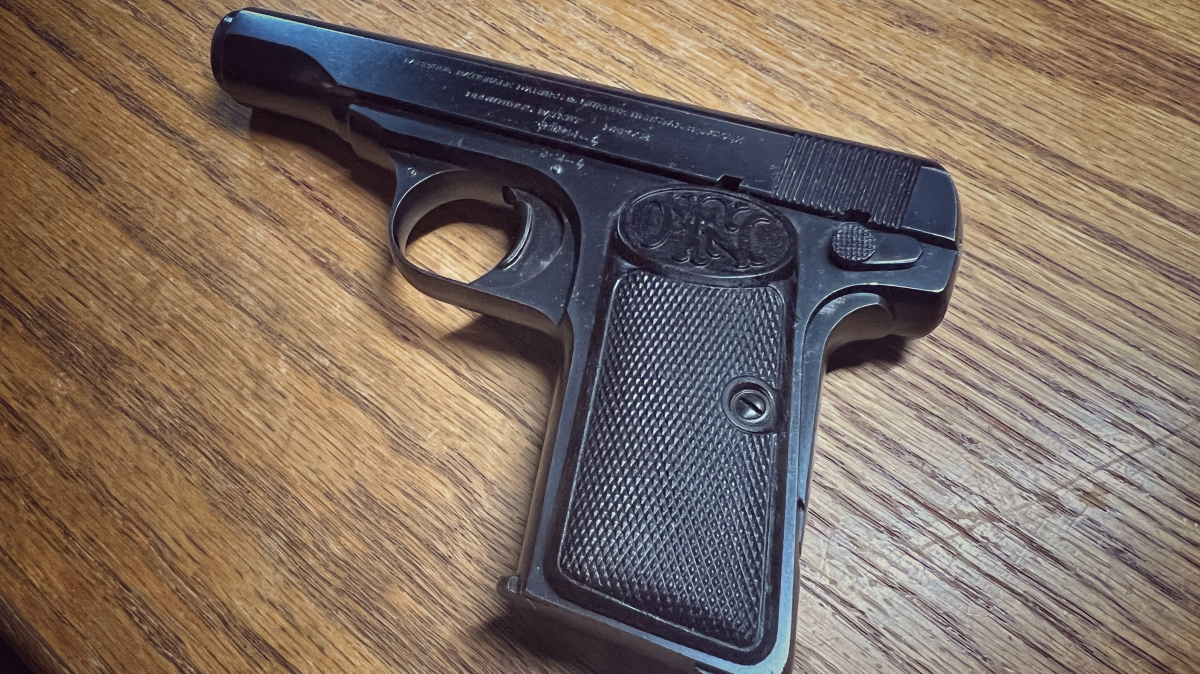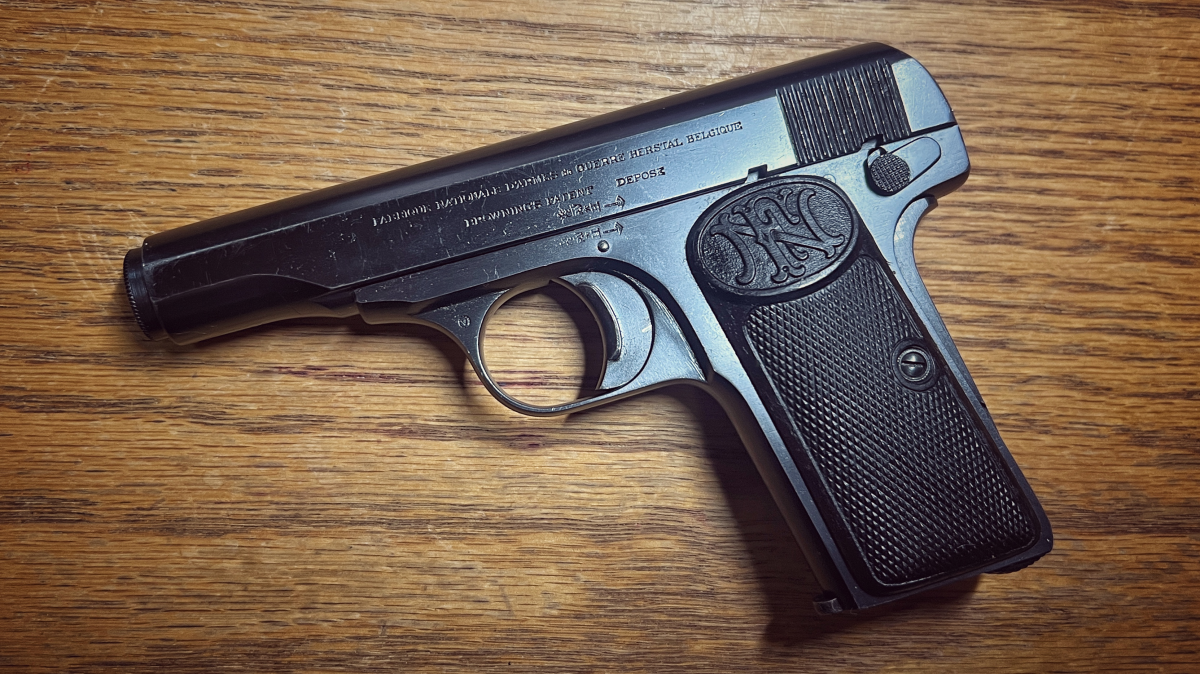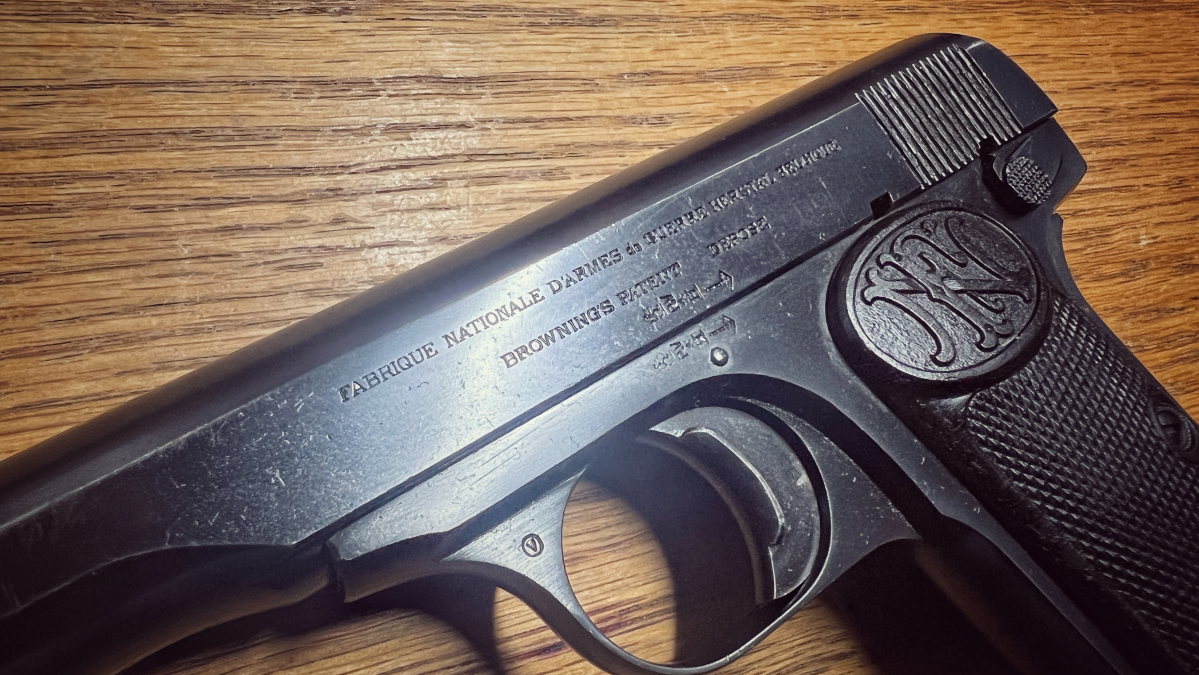Curious Relics #035: The Pistol That Killed Millions – FN 1910
Sam.S 03.23.22

Welcome, if you are a newcomer to this fun bi-weekly segment of AllOutdoor.com! Last time around we covered the venerable Star Model BM. We started out with Part One, Part Two, and Part Three all of which covered history variations specifications range time, and aftermarket parts. Today we get to dive into the younger brother of a pistol we have already covered, the FN 1900. Previously we touched on the FN 1900 in the very first Curious Relics articles. The FN 1900 lit a fire under the people of the world and sparked a concealed carry renaissance. Today we are discussing its lineage with the FN 1910. Let’s dive right in!
Welcome to our recurring series of “Curious Relics.” Here, we want to share all of our experiences, knowledge, misadventures, and passion for older firearms that one might categorize as a Curio & Relic – any firearm that is at least 50 years old according to the ATF. Hopefully along the way you can garner a greater appreciation for older firearms like we do, and simultaneously you can teach us things as well through sharing your own expertise and thoughts in the Comments. Understanding the firearms of old, their importance, and their development which lead to many of the arms we now cherish today is incredibly fascinating and we hope you enjoy what we have to share, too!
History Abridged: FN 1910
As previously mentioned at the beginning of this article, we originally covered John Moses browning’s FN 1899 and 1900 pistol in the first Curious Relics articles. The FN 1900 was a straight blowback 32 ACP pistol and it was the first with a sliding action. In many ways, it was the first modern handgun and by far one of the most popular ones at the onset of the 20th century. It kicked off a snowball effect that led to many different companies creating slide-action pistols with the purpose of pocket carry. After the introduction of the FN 1900, John Browning assisted Colt with their very own concealed carry pistol in the form of the 1903 Colt Pocket Hammerless. Soon after both FN and Colt released similar Browning-style pocket pistols in the 25 ACP cartridge. Browning had also invented a 380 ACP cartridge which was slowly gaining popularity. This new more powerful cartridge than 32 ACP was being adopted by many different countries. This led to Colt intending to make a simple barrel swap possible in the 1903 Pocket Hammerless Model which would eventually become a Colt 1908 Pocket Hammerless. However, simply swapping the barrel was not enough to convert these Pocket Hammerless pistols. This gave John Moses browning the idea to create another pocketable pistol that could easily be converted from 32 ACP to 380 and vice versa. Continuing to work with FN, the FN 1910 was born and it had a big road ahead of it along with a future morbid namesake.
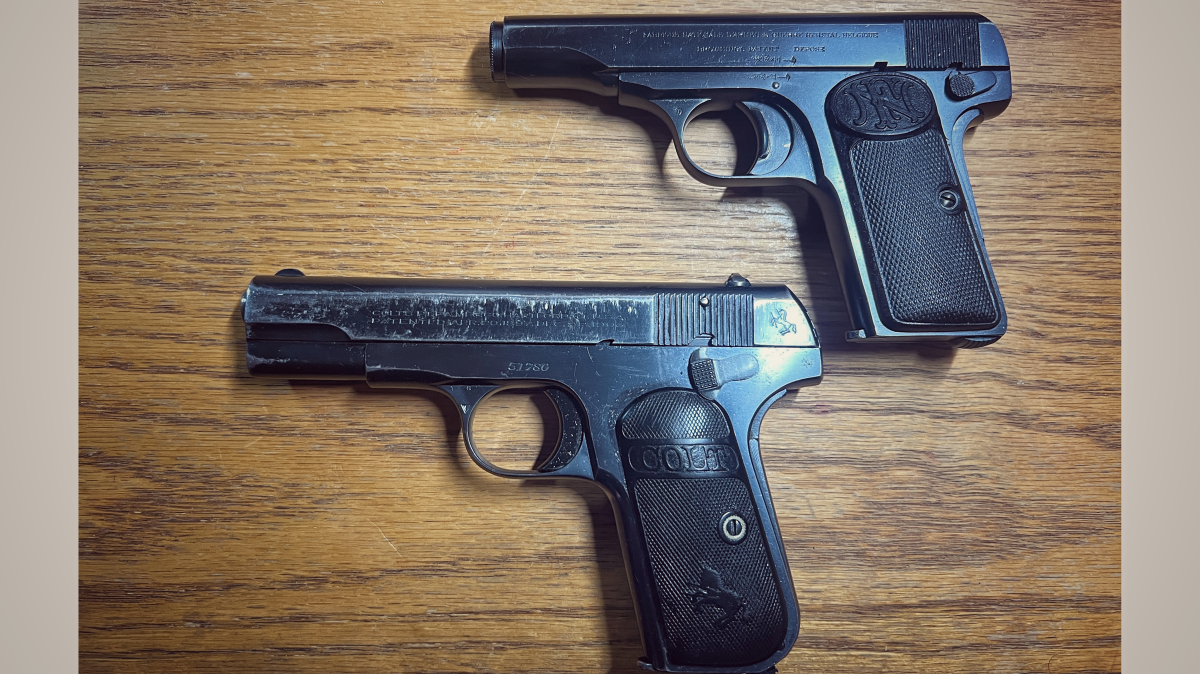
John Moses Browning designed the FN 1910 sometime during 1908. In terms of size, it was comparable to the 1903 Pocket Hammerless, but the grip was slightly scaled down. The Pocket Hammerless models utilize a hammer (despite the model designation) and the FN 1910 uses a striker. It featured an extremely low bore axis due to its recoil spring being wrapped around the barrel and a front barrel bushing retaining it. This barrel bushing was knurled and it had two small notches cutting it for a split key style disassembly tool. It used a manual safety much like the 1903 Pocket Hammerless as well as a grip safety, magazine safety, and sported a heel release style magazine. Upon its release, FN simply named it the FN new model. Despite its name these days, it should be mentioned that the FN 1910 is more of an after name than an actual model designation. The gun itself was designed in 1908 and patented in 1909 and its production didn’t really kick off until 1912. Upon its introduction in 1912, the FN 1910 did not quite turn many heads. It in many ways, was not anything drastically different to gain popularity in an already flooded carry pistol market. This meant low sales on the outset and zero opportunity for military contracts.
At this point, we need to take a second and acknowledge what is going on in the world. At this point in time, Austria-Hungary annexed certain regions effectively declining countries (like Serbia) their individuality and still putting them under the umbrella Ottoman Empire. This did not sit well with people obviously just as most political change often does not. Fast forward to June of 1914 in Bosnia when the Austrian Archduke Franz Ferdinand and his wife were intending to drive around the city for political appearances. This would ultimately end in their doom since an organized group of potential assassins armed by the Black Hand group had plans in place to assassinate the Archduke. After a chaotic and tumultuous day (I recommend looking into it on your own) the Archduke and his wife were shot in their car by a 19-year-old Serbian who was wielding an FN 1910 chambered in 380 ACP. By most historians’ agreement, this was the point of no return and the spark that ignited World War One. Guilty by association, the FN 1910 would become known as a handgun that killed millions.
Originally, due to the way companies designated their models back in the day, the FN 1900 was claimed to be the pistol used in the assassination. This is incorrect and has subsequently caused more fractures in the truth. Since the FN 1900 is closely synonymous with the 32 ACP cartridge when the world finally confirmed that the FN 1910 was used there was confusion on the chambering and was, for a long time, often thought to be the chambering of the pistol used to kill the Archduke and his wife. Let me set the record straight for anyone out there who is not informed on the matter: the FN 1910 used in this assassination was a 380 ACP. It currently resides at the Museum of Military History in Vienna Austria.
So, World War One kicked off and up until The German occupation of Belgium, the FN factory was churning these FN 1910 pistols out which were slowly becoming popular with military officers and even the public at large. In fact, after World War One these pistols became a popular constabulary pistol for countries all over the world. As time went on about 460,000 of these pistols would be made just before the German invasion during World War Two. After World War Two both FN and Browning would manufacture these pistols until the 1970s. A notable competitor/copycat in terms of looks of the time would be Pedersen’s Remington 51 pistol.
End of Part One: FN 1910
Well, folks, I hate to end it touching on just one talking point being a brief description of the history, but we have a ton of more information to sort through in the coming follow-up articles. These FN 1910 pistols are gorgeous works of art and I hope you found their history interesting. So, let me know if you learned anything new or if there is a small arm you’d like me to cover in the future. As always make sure to stay safe out there and take care!
In closing, I hope our Curious Relics segment informed as well as entertained. This all was written in hopes of continued firearm appreciation and preservation. We did not just realize how guns were supposed to look and function. It was a long and tedious process that has shaped the world we live in. So, I put it to you! Is there a firearm out there that you feel does not get much notoriety? What should our next Curious Relics topic cover? As always, let us know all of your thoughts in the Comments below! We always appreciate your feedback.
